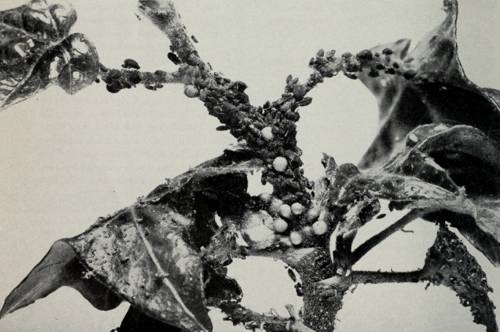
FAQ About Indoor Plant Pest Management

What are the most common pests affecting indoor plants?
The most common pests affecting indoor plants include aphids, spider mites, mealybugs, whiteflies, and fungus gnats. Each of these pests has specific characteristics that make them distinguishable.

How can I identify aphid infestation on my indoor plants?
Aphids are small, pear-shaped insects that can be green, black, brown, or yellow. They often cluster on the undersides of leaves and can cause the leaves to curl, yellow, and stunt plant growth.

What natural methods can I use to manage spider mite infestations?
To manage spider mites naturally, you can spray the plant with water to remove mites physically, use insecticidal soap or neem oil, or introduce predatory insects like ladybugs and predatory mites.

Why are my indoor plants infested with mealybugs, and how can I treat them?
Mealybugs are attracted to indoor plants when conditions are warm and humid. To treat them, clean the leaves with alcohol-dipped cotton swabs, use neem oil spray, or gently wash the plant to remove the insects.

How do I prevent whitefly infestations on my houseplants?
To prevent whitefly infestations, regularly check your plants for symptoms, use sticky traps, and maintain good air circulation around your plants. Adding reflective mulch can also deter whiteflies.

What are some eco-friendly pest control options for indoor plants?
Eco-friendly pest control options include using homemade sprays such as a mixture of water and mild soap, neem oil, and introducing beneficial insects that prey on pests. Regularly cleaning your plants can also help.

How can I identify a fungus gnats problem in my indoor plants?
Fungus gnats are tiny, dark-colored flies often seen near soil. Their larvae live in and feed on organic matter in the soil, which can damage plant roots and stunt growth.

What are the symptoms of pest infestation on indoor plants?
Symptoms include yellowing leaves, stunted growth, distorted leaves, visible insects on or around the plant, and sticky residues or mold, which indicate excess honeydew from pests like aphids.

Can overwatering contribute to pest problems in indoor plants?
Yes, overwatering can lead to pest problems such as fungus gnats, which thrive in moist soils. Maintaining appropriate watering schedules can help prevent these issues.

What measures can I take to prevent pest infestations in indoor plants?
Prevent pest infestations by quarantining new plants before introducing them to your home, inspecting plants regularly, keeping leaves clean, and managing humidity levels appropriately.

How does neem oil work as a pest control method for indoor plants?
Neem oil is a natural pesticide that disrupts the life cycle of insects by acting as a growth regulator. It is safe for use on many plants and targets a broad range of pests.

Are there any household items I can use to deter pests from indoor plants?
Common household items like diluted dish soap, vinegar, and coffee grounds can deter pests. Dish soap mixed with water can act as a spray for aphids and spider mites, while coffee grounds can deter ants.

What role do beneficial insects play in controlling indoor plant pests?
Beneficial insects, such as ladybugs and parasitic wasps, help control pest populations in a natural way by preying on specific pests like aphids and whiteflies.

Why might sticky traps be effective for indoor plant pest management?
Sticky traps are effective because they catch flying pests such as whiteflies, thrips, and fungus gnats, preventing them from reproducing and spreading to other plants.

How can pruning help manage pest issues in indoor plants?
Pruning affected areas can help manage pest issues by physically removing the pests along with damaged leaves or stems, reducing the pest population and improving the overall health of the plant.

Are yellow sticky traps safe for all types of indoor plants?
Yes, yellow sticky traps are safe for all plants. They capture flying insects like gnats and whiteflies without harming the plants themselves, as they do not release any chemicals.

What are some signs that pesticide use might be harming my indoor plants?
Signs include browning or burnt edges on leaves, stunted growth, or the sudden loss of leaves. It's essential to follow application instructions carefully when using pesticides.

Can cinnamon be used to manage pests in indoor plants?
Cinnamon has antifungal properties that may help deter fungus gnats when sprinkled on top of the soil. Its effectiveness on other pests is limited.

What steps can I take to improve air circulation around indoor plants to reduce pests?
Improving air circulation can be achieved by spacing plants adequately, using fans to ensure fresh airflow, and regularly trimming dense plants to reduce humidity levels that attract pests.
